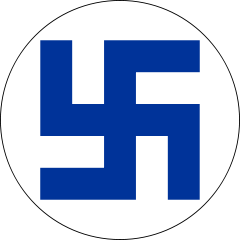FAQ - Frequently Asked Questions
There are our answer to questions concerning VL Myrsky fighter, VL Myrsky fighter restoration project and other related issues. Do not hesitate to ask questions either via e-mail or via question form.
Question: What the names of Finnish aircraft mean?
State Aircraft Factory (originally Air Force Aircraft Factory, later State Metal Factories = Valmet) designed a lot of aicraft. Since 1931 the origin of names was flying objects (birds and insects) and after that, the names mean different kind of winds. The meanings of Finnish aircraft names you can find from the following list:
- I.V.L. D.26 & D.27 Haukka = Hawk
- I.V.L. K.1 Kurki = Crane
- VL Sääski = Gnat
- VL E.30 Kotka = Eagle
- VL Korppi (never flown) = Raven
- VL Paarma = Gadfly
- VL Tuisku = Snowstorm
- VL Viima = Breeze
- VL Pyry = Whirling
- VL Myrsky = Storm
- VL Humu = Sough or Fuss
- VMT Pyörremyrsky = Whirlwind
- VL Puuska (never flown) = Blast
- Valmet Tuuli = Wind
- Valmet Vihuri = Flurry
- Valmet Puhuri (never flown) = Gale
- Valmet Vinka = Cold
Question: What is connection between Finnish and German swastika?
 There is no direct connection between the national insignia of Finland (swastika) and swastika of German nazis.
There is no direct connection between the national insignia of Finland (swastika) and swastika of German nazis.
Count Carl Gustaf Bloomfield Eric von Rosen (1879-1848) donated an Thulin Type D aircraft (licence-built Morane-Saulnier Parasol) to Finland 1918. Before he flew it to Finland, he painted his own sign of luck to wings of the aircraft. It was the first aircraft of Finnish Air Force. Finland adopted the von Rosen swastika to the national insignia March 1918.
German Nazi Party presented swastika in the flag about 17 years later. The flag presented first time September 15th 1935.
However, there is a connection between Swedish swastika and German swastika. Eric von Rosen was a national socialist and sister of his wife (Carin Fock, later von Kantzow) married Herman Göring either 1922 or 1923. According to Wikipedia, Herman Göring visited von Rosens castle and noticed the von Rosen swastika which have been forged into a metal piece at a fireplace. That happened during winter 1920-1921. It seems that the Nazi Party adopted swastika 1920, two years before Göring met Hitler.
Summary: Finnish swastika and Nazi swastika have none direct connections. However, both of them have connection to Swedish swastika (the von Rosen swastika).
